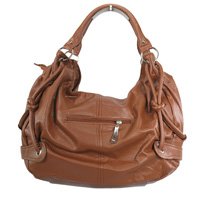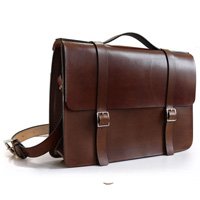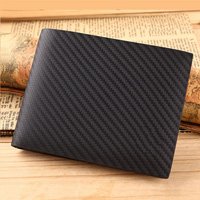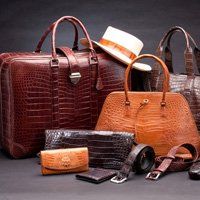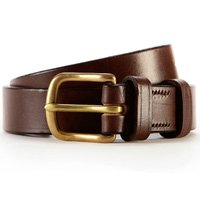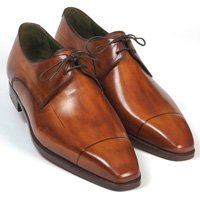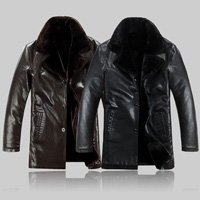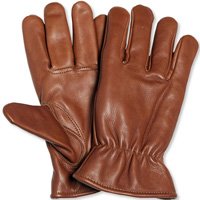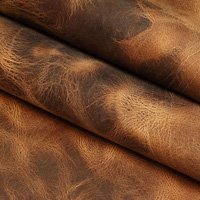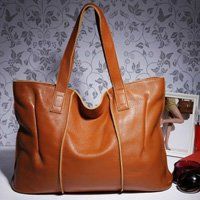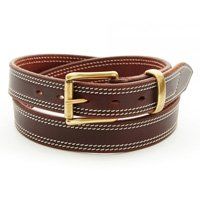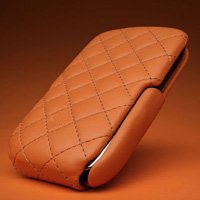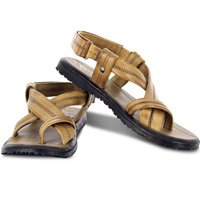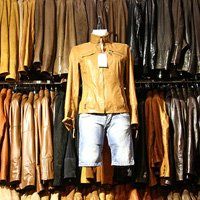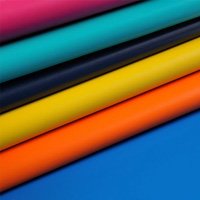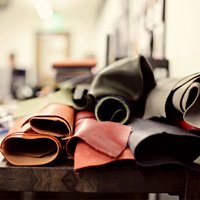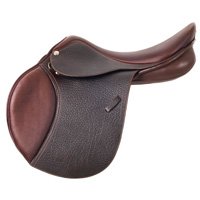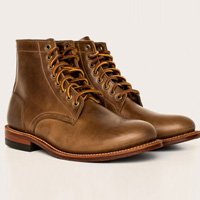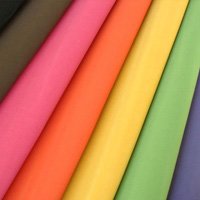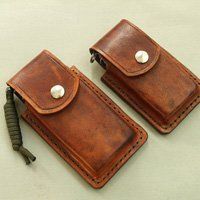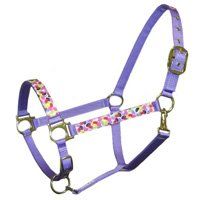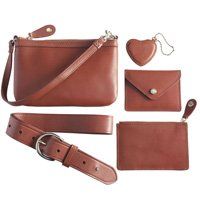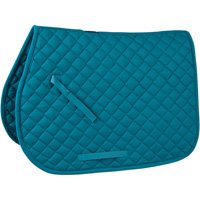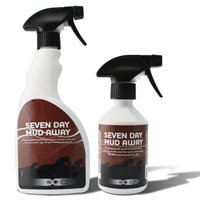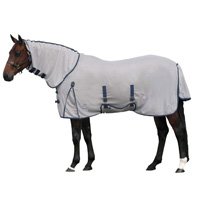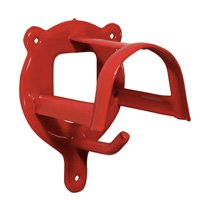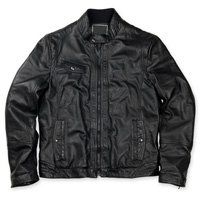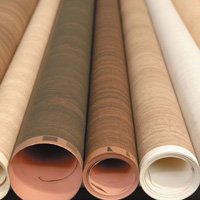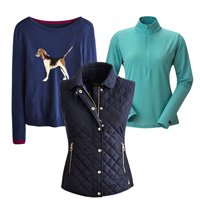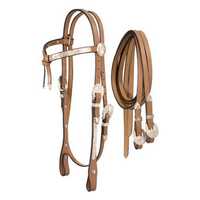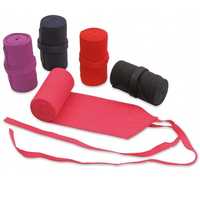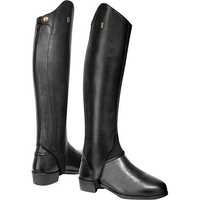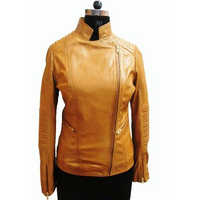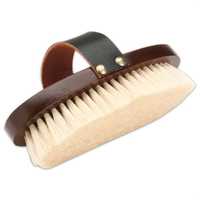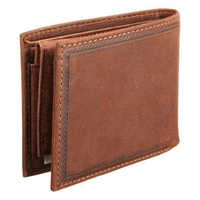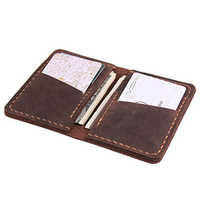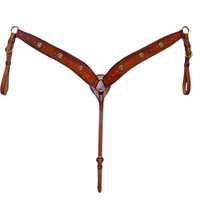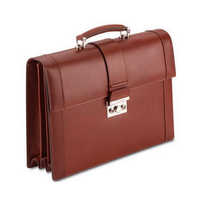Leather & Leather Products
Recently Added Products
Leather : History & Facts
The history of Leather
In terms of practicality, leather is among man's oldest discoveries. Ancestors used leather coats and boots for warmth and protection.
Sandals, clothing, gloves, buckets, bottles, shrouds for the deceased, and military equipment were all made out of leather, as evidenced by wall murals and objects in Egyptian tombs going back to 5000 B.C. Tanning formulas employing specific tree barks and leaves soaked in water to preserve the leather are credited to the ancient Greeks. Around 500 B.C., vegetable-tanned leather was a thriving industry in Greece, and this is the first known example of the leather product.
The facts of Leather
1. You can Get Salmon Leather
Leather made from salmon skin is available for purchase, a fact that you probably didn't know. It's not salmon-colored, but it's quite durable and has a distinctive appearance, so it's become rather fashionable in Iceland and Norway, if not in the United Kingdom or the United States.
2. Leather was once used as a wallpaper
We have no idea how or if leather may have felt on a wall, but we do know it's feasible. Products made from animal hide have been status symbols, fashion statements, and indicators of high quality for centuries.
3. White Leather is the most difficult to produce
In general, leather is a fairly rough and tough substance. The fact that not all hides take dye well is a disadvantage of this quality, though. In particular, white leather is vulnerable to cracking and non-setting color.
Why Use Leather? Characteristics & Properties of Leather
Uses:
- Belts and other leather accessories are widely available.
- Typically, leather is used to create arrow quivers, knife sheaths, and pistol holsters.
- Leather may be used to create a variety of accessories, including cases for eyeglasses and smartphones.
- Leather is used to make a wide variety of bags, wallets, and purses.
- Leather is used for many sporting goods, including baseball gloves and footballs.
- Leather bangles and watchbands are particularly popular accessories.
- Leather is commonly used for many different types of gloves, including stylish winter gloves and tough labor gloves.
- Leather is used for a wide variety of furniture and automotive interiors.
Leather Characteristics:
1. Bycast leather
Bycast leather, made from a lower split leather by melting an adhesive onto the surface and rolling on a colored polyurethane film, is a type of split leather.
2. Nubuck Leather
The grain surface of these leathers has been softly abraded to create a velvety texture, making them aniline leathers. Suede refers to the leather's flesh side, while nubuck refers to the grain side that has been treated to create a certain effect.
3. Finished Split
The term "finished split" is used to describe a flesh split that has had a polymer surface coating applied to make it look like grain leather.
4. Pigmented
Heavy natural scarring and imperfections in the skins can be reduced by buffing the leather's surface. The raw material condition determines the extent of the buffing process.
5. Semi-Aniline
Semi-Aniline colored leather is intended to look like aniline leather, thus it is dyed all the way through and has a thin covering layer on the surface.
6. Aniline
Because of the natural porosity of the skin, aniline leathers absorb more light and liquid, and the color may vary somewhat across the hide.
Leather Properties:
1. Durability
Leather's long lifespan is undoubtedly a plus. Particularly in full and top grain leather, the fibers are extremely compact and dense.
2. Breathability
Leather's breathability is among its many admirable characteristics. This means that the leather is breathable and can absorb and release moisture vapour. Choose clothing and footwear with ventilation in mind.
3. Insulation
The insulating properties of leather are well-known. This is another one of leather's main features, making it a great option for individuals in the market for a new outerwear item.
4. Water Resistance
Another one of leather's many remarkable qualities is its resistance to moisture. Leather, in contrast to many other fabrics, can either absorb or repel water.
5. Ease of Molding and Reshaping
The leather fiber can be shaped anyway the artist wants. Many of the Leather & Leather Products you see in stores and online are formed by applying heat, a process that requires the use of leatherworking machinery.
Types of Leather Grades and Leather Qualities
1. Bonded Leather
Bonded leather is created from leather scraps which are roughly crushed and glued together and use polyurethane or rubber onto a fiber mesh or sheet, much like scrapple or hot dogs are created from ground meat. The practical and esthetic qualities of the end result are highly sensitive to the percentage of leather in the actual mix (which might range from 10% to 90%).
2. Split Grain Leather
Leather with a split grain is a multi-layer cut from the bottom parts of the top grain of the hide. It is a thinner layer of the hide that sits just above the meat.
3. Top Grain Leather
All parts of the hide are used to make genuine leather, which then has its surface "corrected" to make it look more uniform. Its final surface appearance can be achieved through sanding, buffing, dying (or spray painting), or stamping/embossing.
4. Full Grain Leather
This style is nearly identical to full-grain, with the exception that the surface has been sanded and/or buffed to smooth out any flaws.
Leather Grades:
5. No. 1- Leather Hide Grade
They often have a smooth surface devoid of any significant nicks, cuts, or holes. Holes that are only a few centimeters (1 to 2 inches) from the edge of the skins and can be easily cut out have no effect on the overall quality. Approximately eighty percent of all hides sent to tanners should be of the highest quality.
6. No.2- Leather hide Grade
Number two grade hides often allow for holes no larger than five inches. In addition, the extent of any grain flaws should be no more than 1 square foot. No. 2 hides account for between 15 and 20 percent of all hides sold to tanneries.
7. No.3- Leather Hide Grade
It's acceptable to make one cut or hole larger than 6 inches in diameter. Grain flaws and clusters of smaller holes that add up to more than 1 square foot each are also possible. Typically, a hide with a grade of 3 will have at least 50% of its surface area useful.
8. No.4- Untannable Leather Hide Grade
All hides not graded as number one, two, or three are termed untannable. Instead of being sent to tanners, the raw animal hide resources reach an alternative market.
What are the Leather Products?
The leather goods include:
- Gloves
- Footwear
- Hats
- Toys containing leather
- Equine Equipment like Bridles and Saddles
- Soft Furnishing like Sofas or Seat Covers
- Furniture
- Clothing
- Pursses
- Handbags
- Wristwatch Straps
Future of the Indian Leather Industry
One of the most labor-intensive sectors in India's economy, the leather and footwear sector employs 4.42 million people. About 40% of the workforce is comprised of women, making this sector one of the primary employers of women. In terms of output, India is second only to China as a manufacturer of leather footwear and apparel.
Future Prospects of Indian Leather Industry
One hundred percent FDI is currently allowed in this sector under the automatic approach. The Indian government is allocating Rs. 2600 crore to the Indian Footwear, Leather, and Accessories Development Programme (IFLADP), which will fund crucial initiatives like expanding production capacity and modernizing manufacturing processes, bolstering vocational training programs and educational establishments, creating new training programs and educational institutions, and so on.
Thus, due to the large potential market and the Government's support measures and ease of doing business laws, the Indian leather and footwear sector has become an appealing investment destination.
The passing of COVID has created domestic and worldwide opportunities for new businesses in the leather and footwear sectors. Some examples of these are provided below. In the leather, leather goods, and footwear industries, the percentage of enterprises that qualify as MSME rose from 92% to 98% as a result of revisions to the criteria.
The contributions of the Council for Leather Exports have been invaluable to the leather and footwear industry. There is a lot of room for expansion in this market both at home and abroad.
Learning about a topic that is essential to a society's culture, civilization, community, or country's social interests is the process of developing general awareness. The study of general awareness may be relevant to every facet of human life. Such information can be immensely helpful to anyone and to any group.
The term "general awareness" is used to describe a broad knowledge base in areas such as the arts, sciences, politics, cultures, media, health, and medicine.
Conclusion
The long and distinguished history of leather as a seat material is a testament to its practicality and luxury. Leather has traditionally been used to create saddles, equipment, and footwear. The aesthetic possibilities and practical uses of leather have been vastly increased with the advent of new chemicals and cutting-edge processing techniques made available by technological advancements in the leather industry.
FAQs: Leather & Leather Products
Q. What is Leather Used For
Ans. Leather is use for making clothing, handbags, Wallets, Furniture, accessories, sports equipment, and footwear
Q. What Products are made from Leather?
Ans. Handbags, Soft Furniture, Purses, Toys, Gloves, Footwear, Clothing, Wristwatch straps, Chairs, Recliners and others products are made from Leather.
Q. Why is Leather so Useful?
Ans. Leather has been used for seating in vehicles and homes for decades because of its durability and comfort.
Q. What are the 4 Types of Leather?
Ans. Here are the four types:
- Top Grain Leather
- Bonded Leather
- Full Grain Leather
- Genuine Leather
Q. What is Leather Made of
Ans. Leather is made from an animal's skin or hide that has been tanned and processed; often this skin or hide comes from a cow, but other animal skins can also be used.
Popular Products
Human HairForklift TrucksServo Voltage StabilizerBasmati RiceBackhoe LoaderCarry Bag Making MachineDrum LifterElectric StackerScissor LiftsIndustrial Vibrating ScreenRotameterFlowmeterRotary Air CompressorIndustrial Eto SterilizerRice Packaging MachinesShredding MachineHammer MillAutomatic Labelling MachineDiesel ForkliftAerial Work PlatformStorage Rack SystemEpoxy ResinMild Steel BarStainless Steel SheetsStainless Steel StripsBag Filling MachinesAsphalt PlantsSlat ConveyorOintment PlantPlanetary MixersLadies KurtisLed LightsCctv CameraBall ValveAnti Cancer MedicineAir CompressorIncense SticksSolar LightsGoods LiftsVitrified TilesStainless Steel CoilsPvc PipesPvc Pipe FittingsUpvc PipesUpvc Ball ValvePipe Elbows